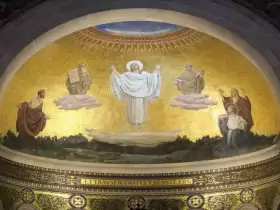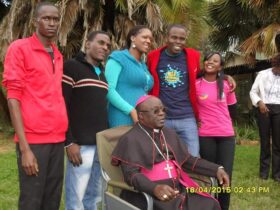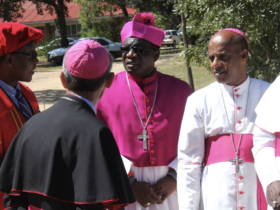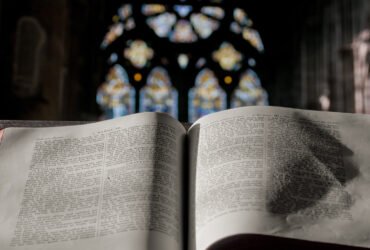The issues of segregation and marginalization that got the likes of Zvarevashe into trouble continued in some form among the black brothers
“A Mission Divided” review by Dominic Tomuseni SJ
In reaction to Francis Rea’s statement that “Missionaries will be judged, ‘but it is only in the kingdom of heaven that the verdicts are published,’” Mhoze Chikowero insists that we have enough in the archives that the missionaries left to judge them in the here and now. His verdict is that missionaries accused Africans of witchcraft, but they “witchcrafted” African Being (chivanhu) and knowledge. They committed an “epistemicide” on the continent and he concludes that Rea represents missionary “self-writing” or justification. David Harold-Barry’s “A Mission Divided” appear as one such self-writing but on closer examination it exposes the limitations of such conclusions because it shows that the story of missionaries is not a single story (from Chimamanda’s Ngozi Adichie, the dangers of a single story). The mission of the missionaries was divided by several factors and actors, such that however one might want to look at it, no one outcome can exhaust what it was all about.
DHB admits there were many things the missionaries could have done better. They should have been more sensitive to and respectful of the indigenous religious practices. They should have been wary of their association with white conquers. They should have had a unified attitude towards the liberation war. Above all, they should have as early as possible integrated their mission to the whites and to the blacks in Rhodesia. But he insists that despite these many failures and challenges, we have courageous accounts of men who initiated many institutions that have done a lot of good. He underscores the significance of “a sustained and imaginative commitment” in their endeavors.
Those of us who joined the Jesuits at a time not long after the mission had somewhat become one and witnessed the rise of the indigenization of the Society of Jesus when local born Jesuits took over leadership positions noticed that the divisions did not end with the missionaries. The issues of segregation and marginalization that got the likes of Zvarevashe into trouble continued in some form among the black brothers and up to now they still abound. We also realized that the whites were not as one as we thought. I for one who had thought that all whites are English was shocked to encounter that there were some whites who could not speak English. I realized that whites are as tribal as we are. I remember one Scottish brethren who was not amused when I said he was English. The story of the Jesuits in Zimbabwe is a human story, black and white, Shona and Ndebele, English and German, Irish and many from all sorts of backgrounds, who have acted and still act in what they perceive to be the best possible way, according to their times and places.
What DHB gives us is not a missionary self-writing, but a demonstration of the humanity of Christianity, which is best expressed by Augustine’s City of God. For Augustine the city of God is not city outside from the city of man. It is the same city of men which is distinguished from the city of God by the different loves operating in it. That of God is characterized by the love of God to the point of self-denial and that of man is characterized by the love of the self to the point of denying God. We cannot tell who belongs to which city in the here and now. We just keep on searching for the will of God in our different ways, in the Church and beyond the Church
A Mission Divided is published in the same year that Jean-Luc Enyegue published Competing Catholicism which captures similar struggles in French West Africa. These two works capture what Catholicity is all about. it is not uniformity, but universality that expresses itself in diversity, with warts and all. Jesuits in their many shades are part of this Catholicity.
One colleague noted “I was a little disappointed with the section on the late admission of Africans into the society. The section is full of excuses by the author for some bad behaviors, with expressions like: “whether they knew it or not,” “this too would be understandable” (p. 5), “they did not want to or, to be fair to them could not imagine the future” (p. 14), “unconsciously perhaps” (p. 189), they “did not know what they were doing” (p. 190). Such excuses are a clear sign that there are a number of things that do not add up.
Nonetheless, DHB mentions at the beginning that when he embarked on the project, he was hoping to find a well-trodden wood, but he discovered a forest. In as much as his book is a comprehensive labour of love, this forest is an amazon and is yet to be exhausted. (Even though DHB disagrees with me that his book is comprehensive, I maintain that it is), Thus, there is more that needs further investigation. It is now a duty of others especially young Jesuits to enter and add to the discourse. They have to account for the resilience of the likes of Kapito, Chawasema, Zvarevashe, Chishiri, Tirivanhu and many other local Jesuits who gave their life to Jesus in this Society, in spite of all the horrible things that happened to them. The new generation of Jesuits in Zimbabwe have to explain why they as young black Jesuits decided to be part of the brotherhood, in spite of confraternity having a history of “epistemecide.” DHB gives some of their reasons at the end, but we would like to hear from them in simple, readable and yet profound accounts, such as the one DHB gives us in this book.
Dominic F. Tomuseni SJ










Leave a Reply